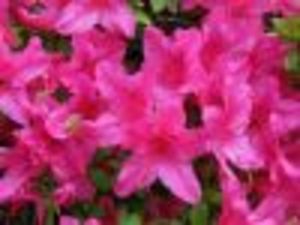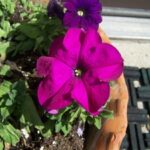Small garden shrubs are effective in landscapes as attractive groupings, garden borders and for erosion control. A small shrub may fill your need for a plant grown in full sun or varying amounts of shade
.
There are many reasons one would choose a small shrub as part of a landscape. A shrub may be used singly as a focal point or specimen plant. A mass of small garden shrubs may fill in a bare area or hide some unsightly aspect of a home or building. Small shrubs may be used to compliment surrounding flowers and foliage. Whatever your landscape need, there is a small garden shrub to suit your purposes.
The following five garden shrubs are popular in the southeastern US, but may be manipulated into a microclimate in other zones.
Azalea
Among the most popular of small garden shrubs is the Rhododendron obtusum, commonly called the Karume Azalea. This spring-blooming specimen is hardy in zones 6-9 in the US and performs best if planted in light, filtered shade. The Karume reaches 3′-4′ in height and may spread to 6′ wide. Classified as a dwarf evergreen shrub, its habit is dense and spreading. In optimum conditions the Karume is covered with 1 ½” blooms from late April through the end of May.
Many cultivars of this Azalea provide a variety of bloom colors. The Karume is an attractive border or specimen plant and provides a striking show when planted in masses of the same color. Different cultivars provide different colors, as with pink ‘Coral Bells’ and ‘Apple Blossom. Plants azaleas high, as the roots are susceptible to rot if buried deeply. Azaleas prefer a slightly moist, richly organic and acidic soil.
Loropetalum
Loropetalum chinensis, commonly called Chinese Fringe is available in dwarf form. Referred to as “the darling of the landscape” by professionals, this Loropetalum has deep burgundy foliage which becomes green with beautiful, pink ,strap-like blooms appearing in spring. ‘Ruby” is a stunning addition to beds and borders. Reaching 4’ or less, this compact garden shrub likes organic soil and does well in full sun or partial shade.
Loropetalum is hardy in zones 7-9 and does not like extremes of dry or wet soil. Mulching may help retain moisture and protect roots if temperatures fall. This small garden shrub needs fertile, well-drained soil and good sun for best color of foliage and flowers.
Heavenly Bamboo
Dwarf cultivars of Nandina domestica are hardy in zones 6-10. Firepower’ displays attractive reddish foliage in fall and winter. Dwarf Nandina is frequently used as an accent in front of larger shrubs, but functions well alone or in mass plantings.
Often the most brilliant color occurs when this small garden shrub is planted in full sun, but it will perform in part shade as well. Once established, it is drought tolerant and requires little maintenance. Canes of this cultivar are unbranched and do not require pruning. This is a virus-free selection that is not invasive, as it cannot reproduce. At a height of only 2′ – 3′, ‘Firepower’ offers long-term beauty with minimal effort.
Junipers
No plant list for small shrubs in the landscape is complete without including some variety of Junipers. Often used for groundcover effect and erosion control, the berried evergreen may function well in a number of situations. It is particularly useful when draping over a wall, creeping over a berm or cascading down a slope.
‘Plumosa Compacta’ is a small, widely-used variety of Juniperus horizontalis. Growing at a 45-degree angle, this dense and spreading garden shrub sprouts tiny awls of green and blue and becomes a distinctive purple in winter. Reaching a height of 18″, it is hardy in zones 3-8 and needs full sun and well-drained soil.
Aucuba
The dwarf Aucuba japonica is well worth consideration for deeply shaded areas in the landscape. ‘Nana’ is a small garden shrub which is urban-tolerant with coarse green foliage year round. Its’ upright and rounded form reaches 3′ or less and is a proven performer in shady spots. Plant in fertile, moist soil and delight in this plants’ serene beauty. Avoid sun for this specimen, as it will develop sun scorch. Hardy in zones 6-7.





